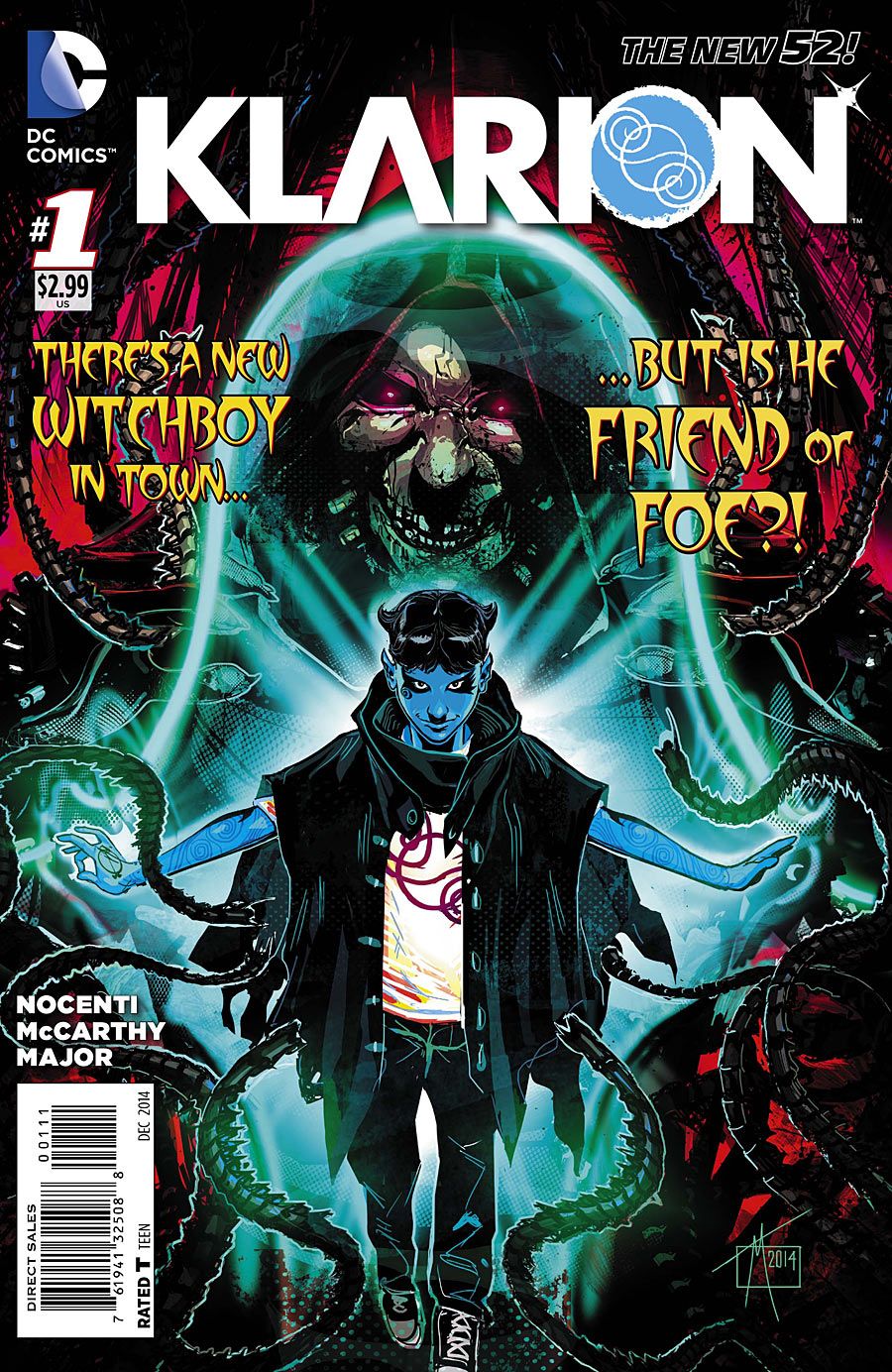As uneven as it is intriguing, "Klarion" #1 establishes the ethically ambiguous, endlessly ambitious Witch Boy as a character well worthy of his own series. Writer Ann Nocenti gives him a clear direction and motivation, while Trevor McCarthy and Guy Major present a rich, creative vision for his weird, weird world. However, the script is too heavy-handed, even for a first issue, and it kept the story from wowing me.
Though they're drawing comics' most famous city, Trevor McCarthy and Guy Major have made their take feel distinctly occult. Klarion arrives in a netherworld New York that looks like Blade Runner met Pan's Labyrinth. Instead of gleaming skyscrapers or gritty alleys, he finds dark Victorian mansions, fairytale towers and techno clubs lit by green fire. Major's colors are straight from the Hubble telescope, magical and otherworldly; the sky is forever purple-red, and Klarion is a hyper-bright shade of blue that works so well with MCarthy's heavier inking.
In addition, the character designs surprised with their effectiveness. Klarion is not an easy character to update; pointy-haired, blue-skinned Puritans are naturally a little goofy, but McCarthy makes Klarion the right mix of odd and intimidating. This character is never going to look "cool," and McCarthy isn't afraid of that.
Though the issue is intricate and imaginative, sometimes the storytelling was frustrating. McCarthy's page layouts are uber creative, placing the action in corkscrew shapes, stacked circles or wavy triangles like cracked glass. Thematically, his approach is delightful -- "Klarion" is a book about exploring the multiverse, so it makes sense that physical space is forever shapeshifting -- but in a first issue, I also wanted more grounding. It could be difficult to determine what was going on, particularly in two instances when Klarion carries Teekl and throws a street sign. Still, it's a pleasure to revisit and explore all the funky details that went into the panels.
Ann Nocenti's script isn't bad, but it tries too hard. She wants these characters to sound like edgy magical teenagers, and the heavy handedness doesn't quite work. For instance, Klarion and Zell have a debate about karma that goes in circles and sounds more like posturing than arguing. I couldn't determine the point of that scene, except to establish Klarion's lack of morals, but by that point, the reader could already get that from the story. Like many scenes in "Klarion," it felt like too much.
That said, I understand that Klarion isn't exactly DC's most popular character, so Nocenti has to do a fair amount of establishing work. To her credit, she accomplishes that establishing work in style. Having done so, though, I hope she tones it down in future issues.
The plot is also a bit shaky. Klarion is first shown to hate his teacher for trying to limit his study of magic; then he is shown to hate bullies; then he is described as "not motivated by good." I didn't quite know what to make of him. Now, he's allowed to have layers, but when so much of the issue is handed to the reader, layers feel conflicting rather than complementing.
Here's the thing, though: I'm 100% picking up issue #2, so "Klarion" #1 must be doing something right. The Moody Museum, Rasp and magic's war with technology have all peaked my interest. The creative team is playing with ideas and atmosphere that I don't see in other DC titles. Whether they can smooth it out going forward remains to be seen, but I'm rooting for this book.

